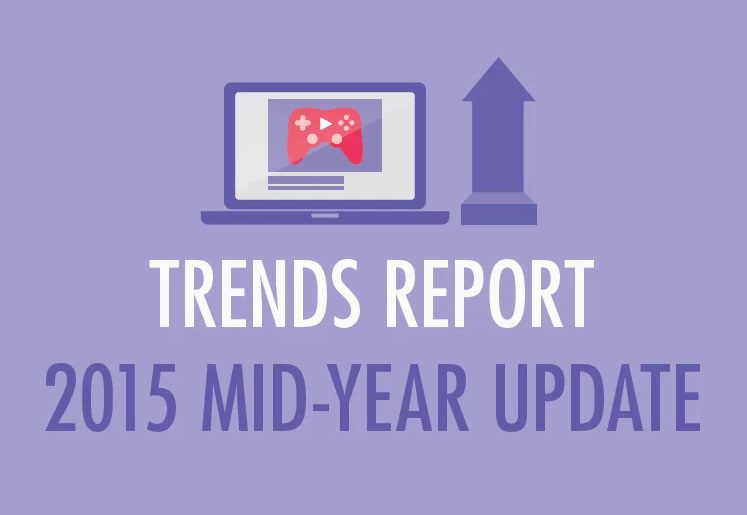New digital marketplaces for media rights, the rising popularity of real-time video broadcasts and the effects of algorithms on content discoverability… The Canada Media Fund looks into a six trends shaping today’s screen-based industries.
Summer is not only made for having fun around the pool or enjoying a BBQ meal with friends. This is the happy time of the year when we release our Mid-year Update Trends report. Six key trends grabbed our attention:
1. The growing dependence on algorithm-based recommendations
There is unprecedented choice of content, but users’ attention span has shortened, leading to overwhelmed users who tend to limit their network access to fewer yet larger and dominant platforms.
What we explore in this update is the fact that most of these dominant platforms (such as Facebook, Google, Amazon and Netflix) rely on algorithmic formulas to provide recommendations, thus creating “filter bubbles.” Indeed, each user’s individual web profile (based on browsing history, geographical location, etc) influences what he or she sees on the web.
In many cases, this “personalised content offering” can be appreciated by users… but, it also reduces the discoverability of content that doesn’t match a user’s profile. This can become even more problematic when platforms and services favour certain types of content (such as paid content) over others as we show through examples and data in the report.
2. Content globalisation and integrated markets
The transfer of TV content toward online viewing is gathering momentum. In the US, PricewaterhouseCoopers predicts that electronic home video sources combined (i.e., streaming video, video on demand, over-the-top and transactional) will generate more revenue that the entire film industry by 2018.
Yet, we now know that this streaming culture is essentially based on a logic of free access to content or on very low entry prices. In the meantime, rights management is also moving toward globalization. The challenge for all stakeholders will be to find ways to sustain their program investments in original content in the future.
3. New content formats spurred by changes in consumer habits and behaviour
In the last months, eSports have conquered new ground and invaded linear TV and theater screens. This remarkable rise points to a broader phenomenon: the arrival of new content formats based on long-form video and broadcast in real-time with little or no editing or narration.
This growing appetite for lengthy real-time entertainment explains in part the almost spontaneous popularity of Meerkat and Periscope, two real-time broadcasting applications. While this format isn’t completely new to television (think of live journalistic coverage), it’s also gaining new ground on the small screen. Slow TV (hours of unedited content) has left its homeland of Norway and is being adopted by several broadcasters and even advertisers around the world.
4. Will future audiences grow as digital-only consumers?
The entertainment and advertising industries have been absorbed for several years with Millennials, but it now seems important to take a deeper look at the new cohort of content consumers, i.e., the ones who follow the millennials: generation Z (which spans from the mid or late 1990s to today).
According to Nielsen, the average US teenager (12–17 years old) watches 4 hours less of traditional TV per week compared to 10 years ago. Will this new generation ever revert to more traditional content consumption platforms?
5. Fewer and fewer gatekeepers in the generation of revenue
Could further automation lead to new (and more disruptive) ways to trade audiovisual rights?
While rights clearance and commercial negotiation still exist upstream from online exploitation we could see a growing number of virtual marketplaces like RightsTrade or Fadel disrupt traditional markets. They might even bypass sales reps or distributors while providing new opportunities for right owners to control their exploitation at a lesser cost than distributor commissions, with consumers potentially benefiting from lower prices.
6. Is there anything to tame the giants?
Can creative alliances, new competitors and bold regulatory proposals “tame the giants”? We look for answers by focusing our attention on the heated competition between YouTube and Facebook for online video views, the players that remain staunchly independent despite the pressure (Snapchat, Vice and Vessel), the rise of China and India as digital economy powerhouses, and new regulatory proposals to keep the giants in check, such as Europe’s Digital Single Market plan.
At the end of the report, you will also find a table summarising the challenges and opportunities facing content producers and distributors in regards to the many changes that are presented in the report.
Enough said. Sit back, relax and click here to read the full report.
This is the latest in a series of posts published in partnership with CMF Trends, Canada Media Fund’s dedicated industry and market trends resource.
Don’t miss MIPCOM (5-8 October): get a chance to live the latest evolutions of the TV industry from the inside!




